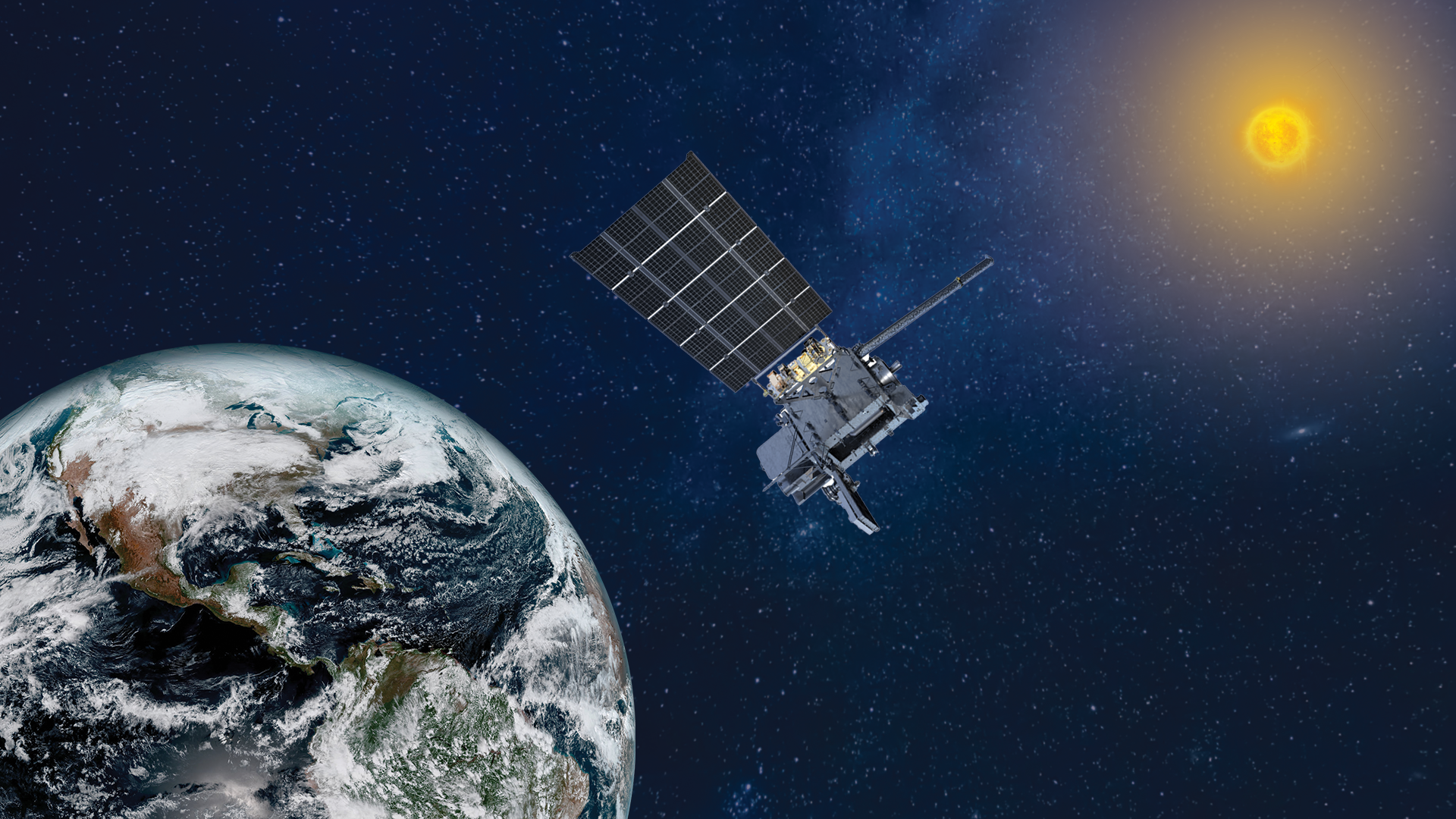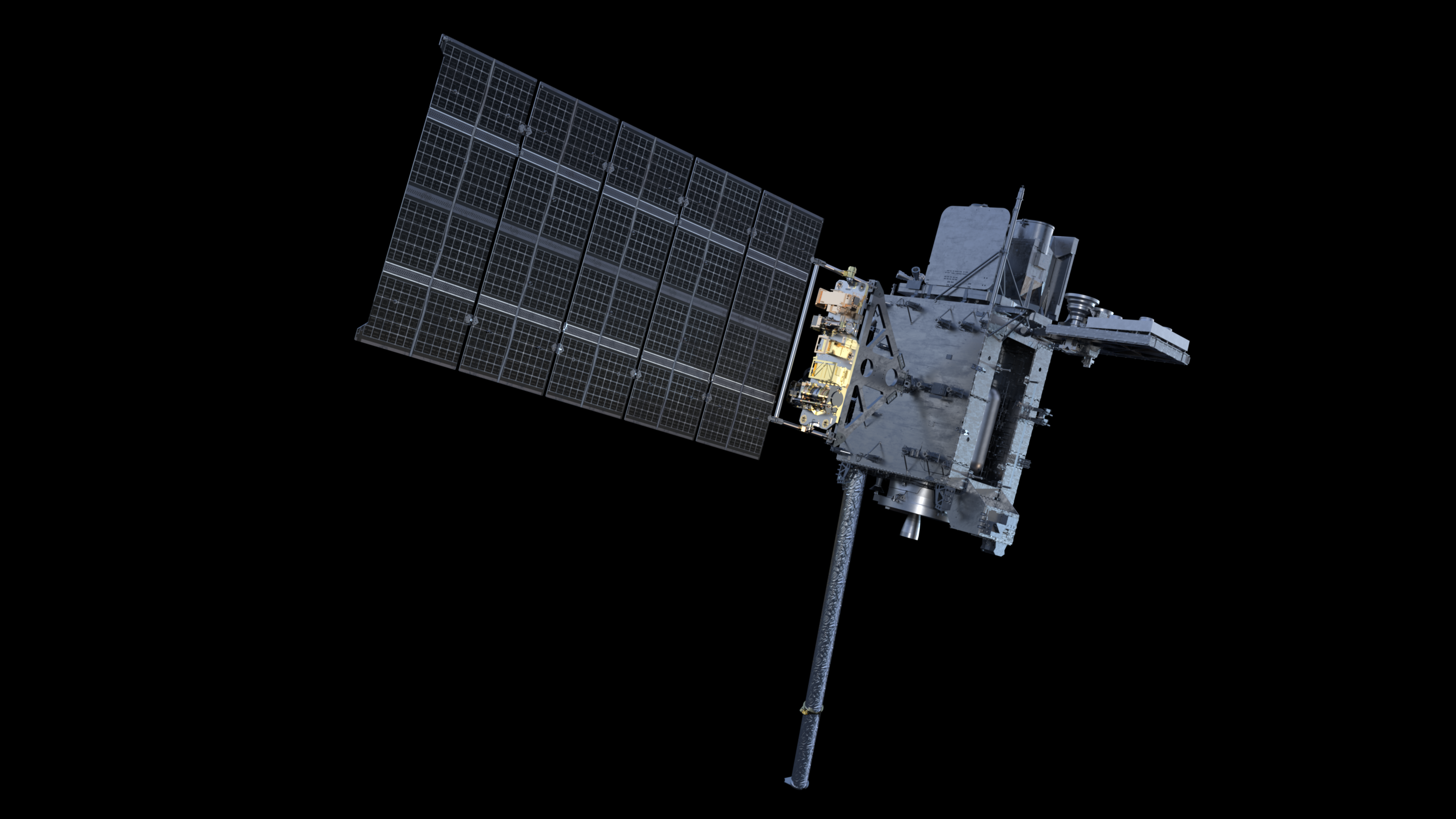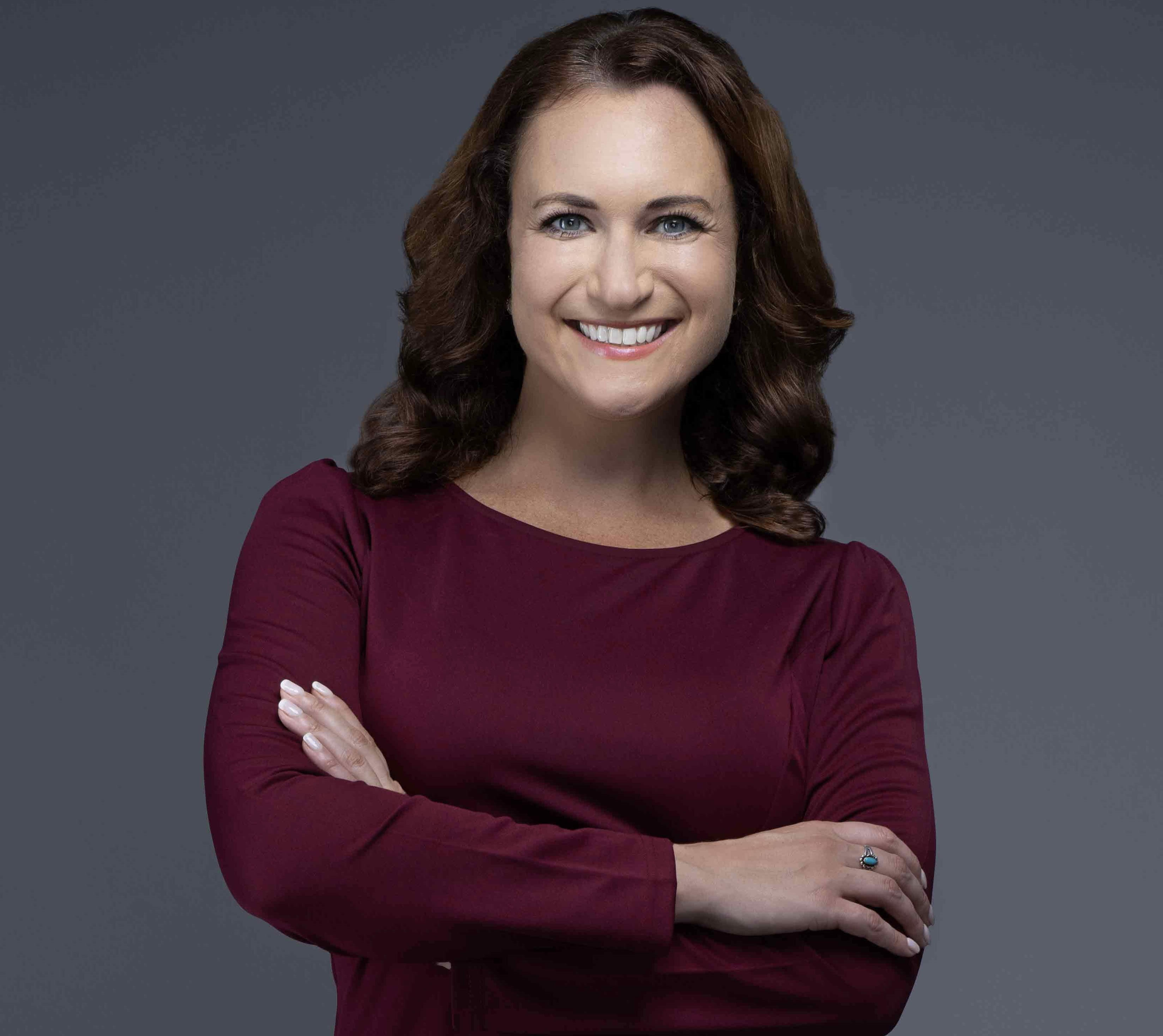Powerful new NOAA weather satellite set for June launch atop SpaceX Falcon Heavy
NOAA's GOES-U will be the most advanced of the series.

It's the final countdown (I know you're singing along with me, don't deny it!)
But why not, as the countdown clock now reads less than a month until NOAA's GOES-U satellite is slated to soar into space on a SpaceX Falcon Heavy Rocket.
At the beginning of the year, the fourth satellite in NOAA's GOES-R series made the journey from its home in Colorado at Lockheed Martin to Florida to undergo processing ahead of the launch at the end of June. The mission's two-hour launch window opens on Tuesday, June 25 at 5:16 p.m. EDT (2116 GMT) and will liftoff from Launch Complex 39A at NASA's Kennedy Space Center. Space.com will be on location to provide live updates on launch day, and you can watch the launch live here thanks to NASA, when the time comes.
Related: NASA picks SpaceX's Falcon Heavy to launch GOES-U weather satellite
But before GOES-U gets to the launchpad, there's still several more steps that need to be taken. For one, the satellite will need to be placed atop its Falcon Heavy rocket ride.
"It'll be encapsulated on the 13th of June, will move out to Complex 39 on the 14th, and we will perform some final spacecraft testing and configuration out there," Rex Engelhardt, GOES-U Mission Manager for NASA's Launch Services Program, said during a virtual media briefing on Wednesday (May 29). "At this time, we'll be ready to make an encapsulated assembly with the satellite and Falcon Heavy on the 22nd of June, and we'll roll the Falcon Heavy up with the spacecraft onto the launch pad on the 23rd."
The first launch of the series, GOES-R, was in 2016, followed by GOES-S and GOES-T in 2018 and 2022, respectively. But compared to its three predecessors in the series, GOES-U will be quite the shining star in the constellation.
Get the Space.com Newsletter
Breaking space news, the latest updates on rocket launches, skywatching events and more!
Not only will it have all the bells and whistles like its siblings — featuring instruments that provide state-of-the-art advanced imagery, take atmospheric measurements of Earth's weather, oceans and environment, as well as real-time mapping of total lightning activity — but GOES-U will also have improvements to each component based on what adjustments NOAA found were needed from the earlier trio.

"NOAA wants the best possible spacecraft incorporating all the upgrades and lessons learned from the development and operation of the first three spacecraft. Our team incorporated all the design process improvements derived from the first three builds to make this the best GOES satellites," John Deily, GOES-R Flight Project Manager at NASA Goddard Space Flight Center, said during the briefing.
GOES-U will also include a brand new compact coronagraph (CCOR) tool to help with space weather forecasts.
"The CCOR instrument has been a full participant in the rigorous testing of the GOES-U satellite. CCOR is ready to become the first operational coronagraph in geosynchronous orbit and produce spectacular images of our sun's corona on a continual basis," Deily added.
The CCOR instrument will help scientists understand and improve forecasting even more for space weather events like we experienced with the historic geomagnetic scale 5 level storm (G5) that caused quite the aurora show Mother's Day weekend.
It will also be a huge update from the aging LASCO coronagraph on the NASA/European Space Agency (ESA) SOHO (Solar and Heliospheric Observatory) spacecraft, which launched in 1995, and provide an even clearer picture taking measurements of the sun's outer atmosphere, the corona.
"It does this by blocking the disk of the sun, creating a total solar eclipse every 30 minutes. That allows us to observe large explosions on the sun (coronal mass ejections) that can hurl billions of tons of matter at millions of miles per hour towards Earth," Elsayed Talaat, director of the Office of Space Weather Observations at NESDIS, said during the briefing.
"These types of observations are key to our long-range forecasts in space weather so they give us one to four days' worth of warning before they reach earth here and cause geomagnetic storms and potential impacts on human life and critical technologies," Talat added. "It's going to replace our aging research infrastructure that can take up to eight hours for us to get those measurements. Now, we'll have them continuously."
After GOES-U launches and begins its orbit, it will change designations to GOES-19 and undergo a crosscheck of all of its systems, instruments and data. After it's deemed ready to operate, which if all goes well could be as early as April 2025, it will take the place of GOES-R, now known as GOES-East, and begin watching over a big portion of the Western Hemisphere with its new and improved changes.
The technology from the entire series has already improved weather forecasts, allowed for closer monitoring of dangerous weather systems such as severe weather and hurricanes, and even helped firefighters and meteorologists detect and track wildfires.
Full scans are taken of Earth every 10 minutes and updates can be given on particular storm systems every 30 seconds, allowing meteorologists to issue advanced watches and warnings and have an even better understanding of storm formation, growth, and decay.
Join our Space Forums to keep talking space on the latest missions, night sky and more! And if you have a news tip, correction or comment, let us know at: community@space.com.

Meredith is a regional Murrow award-winning Certified Broadcast Meteorologist and science/space correspondent. She most recently was a Freelance Meteorologist for NY 1 in New York City & the 19 First Alert Weather Team in Cleveland. A self-described "Rocket Girl," Meredith's personal and professional work has drawn recognition over the last decade, including the inaugural Valparaiso University Alumni Association First Decade Achievement Award, two special reports in News 12's Climate Special "Saving Our Shores" that won a Regional Edward R. Murrow Award, multiple Fair Media Council Folio & Press Club of Long Island awards for meteorology & reporting, and a Long Island Business News & NYC TV Week "40 Under 40" Award.









